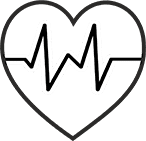Summer Issue - 2015

smilescapes
Gender equality does not imply that all women and men must be the same. Instead, it entails equipping both with equal access to capabilities; so that they have the freedom to choose opportunities that improve their lives. It means that women have Equal access to resources and rights as men, and vice versa.”
India is amongst the fastest growing economies in the world today, with a GDP growth rate of more than 7 % during the XII plan period. This high level of growth can, however, be sustained only when all sections of the society, specially women become equal partners in the development process.
In 2013 Global Gender Gap Index’s list of countries, India ranked 124th in terms of women’s economic participation. In 2014, India’s position has gone up to 114th. It is an explanation of the fact that India is experiencing a steady improvement in its overall score on the economic participation and opportunity and educational attainment subindexes.
However, we are still below average on the three aforementioned subindexes: 1. Economic Participation, 2. Opportunity and 3. Educational Attainment. In fact, India is one of the twenty worst-performing countries on labour force participation and estimated earned income indicators as per World Economic Forum’s Global Gender Gap Report 2014.
From sheer absence of suitable employment opportunities, to lack of skills and multiple societal issues, the factors that push female labour participation in India to particularly low depths are many. While economic development creates more jobs in the industrial and service sectors, it is the men who avail most of these. The women who are left behind do not easily receive the benefits of the prevalent economic development. Hence, a highly vulnerable group of women is being created on the same stage of economic growth.
In India, social factors play a significant role in low women’s labour participation. Husbands and in-laws often discourage women from working, while, in many parts of the country, restrictions are imposed even on their movements outside the household, but there are some conflicting facts to examine within the whole context.
There is another side of the story which contradicts with the development framework, the low labour participation particularly among urban, educated women — the section of the female society that is, in fact, less likely to be constrained by social factors.
Women’s economic participation is hindered by low skills, the gender gap in educational level of the labour force. In 2004-05, 60% of the female employed were illiterate and 3.7% were graduates, these shares for the male labour force were about 28% and nearly 8%, respectively. Skills and knowledge are the driving forces of economic growth and social development for any country. As India moves progressively towards becoming a ‘knowledge economy’, it becomes increasingly important that the country should focus on advancement of skills and these skills have to be relevant to the emerging economic environment.
India needs not only an employment revolution but also an educational revolution that allows—and encourages—women to play their full role in a modern Indian economy. It is well known that female participation in the workforce rises along with educational levels. Initiatives of the government on Skill Development, along with business and non-governmental organizations have been commendable in helping women build job-relevant skills, even in the absence of higher education.
Smile Foundation’s Smile Twin e-learning Programme (STeP) is a national level livelihood programme providing market-oriented skill training, along with placement support, to the less educated, unemployed and socio-economically marginalized youth. English Proficiency, Basic Computer Education, Personality Development and Soft Skills are the primary subjects covered in the training.
The goal is to enhance the youth’s prospects of employment in the fast expanding retail and service sector.
The programme is purposely designed to train underprivileged youths between the age group of 18 and 25 years, who have a minimum qualification of Class 10. They are given meaningful vocational training in the well-equipped STeP centres, set up in 16 states across the country. While this programme is constantly working towards making the young population in India employable, it is also significantly bridging the gap between the demand and the availability of adequately skilled manpower in the booming retail and service sectors in the country.
Under this programme, Smile Foundation sets up STeP centres across the country, mobilizes target areas in order to create awareness about the vocational training module and ensures maximum enrolment through counselling sessions of families about how the six months training course could bring about a transformation in their lives.
The participation of these women in the workforce, the quality of work allotted to them and their contribution to the GDP are indicators of the extent of their being mainstreamed into the economy. Now as these women are employed and earn a wage, their contribution to their family prosperity is more visible. Today, these women have a voice, because of being less dependent on others.
In this era of globalization when economic policies hold the life line across countries and knowledge based service sectors are fast approaching the roads of developing countries, participation of women in such movement has helped them gain freedom, dignity and a chance to change their stereotype identities.
Smile Twin e-Learning Programme though has initiated the process but there is far a long way to reach the desired destination, where females are equally integrated into the development story with freedom and aspirations. Creating more jobs and ensuring better working conditions for women will encourage greater female participation in the economy.
To transform the lives of many youth who are still waiting to be empowered, to increase participation of many women in India’s development, the country needs education and vocational training programme on a mammoth scale. Recently, 13 new centres in Delhi, Mumbai, Bangalore and Gurgaon became operational under Smile Foundation’s Smile Twin e-Learning Programme (STeP), taking the total number of STeP centres across India to 45. In the next few months, 30 more centres would be added.
India is a nation built on democratic ideals and principles. The fundamental rights incorporated within its constitution were equally entitled to the women from the very beginning.
Lakshmi Puri, the assistant secretary-general of UN Women, noted in 2011 that India’s growth rate could jump by 4.2 percent if women were given more opportunities. That would push India’s current growth rate of about 7.5 percent closer to 11 percent, making it, once again, one of the world’s fastest accelerating economies.
Integration of women in India’s economy holds the key to its untapped potential.



